
Yurii Dykun: "Art should be done easily, then it is easy to perceive"
2017
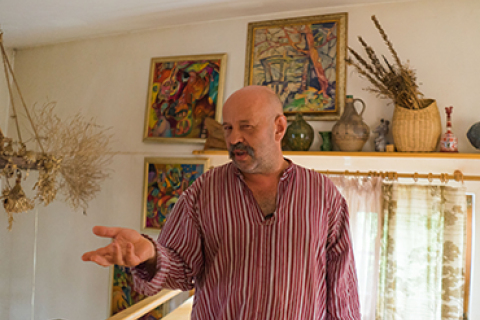
To his studio on the outskirts of Uzhhorod, a Transcarpathian artist, a teacher of the College of Arts named after A. Erdeli Yurii Dykun invites sincerely. He asks to orientate on a large bush of barberry at the gate.
A small courtyard in front of the master's house pleases the eye with the arrangement and an interesting approach to decoration. But the house with each of its elements, every thing seems to be saying: here lives a really interesting person, inspired and extremely positive. This is felt in the conversation and in the artist's hospitality. He is an artist in everything from the interior to the kitchen, where he often meets guests. Here and start the conversation …
– Mr. Yurii, when did you start drawing? Or not: when the desire to create was born in your soul?
– Very aptly ask, because that's exactly how it was born... Up to 15 years I played football and I really liked it. But one day I was brought from the field and I thought: "Something is wrong here, it is not that way I'm going in my life". And it was at this time that my classmate Mykhailo Chundak offered to join him to enter the Art College. "I need to at least train, prepare," - I answer. I came home, found a simple watercolour paint and painted a pot of tomatoes and cucumber. I showed this work to my father, who graduated from our College, and he was surprised – how could I draw it for one time?
So I drew more and more, and these my attempts have led to that eventually it was possible to enter the College of Applied Art. And then, in the process, I began to like drawing. And when you like it, you start loving it. That is why, in my opinion, the most important thing in life is to do the work that you like. This is a great human happiness! To everything, I had wonderful teachers – Ivan Didyk and Ivan Masniuk and others - they taught us to understand art!
After the end of the school was the army, and then – educating in Lviv. There I was in the company of very good people, and the environment, as is known, has a very big influence. These artists have become my friends for life – A. Medvetska, N. Hrabar, A. Koval, N. Kikot and others!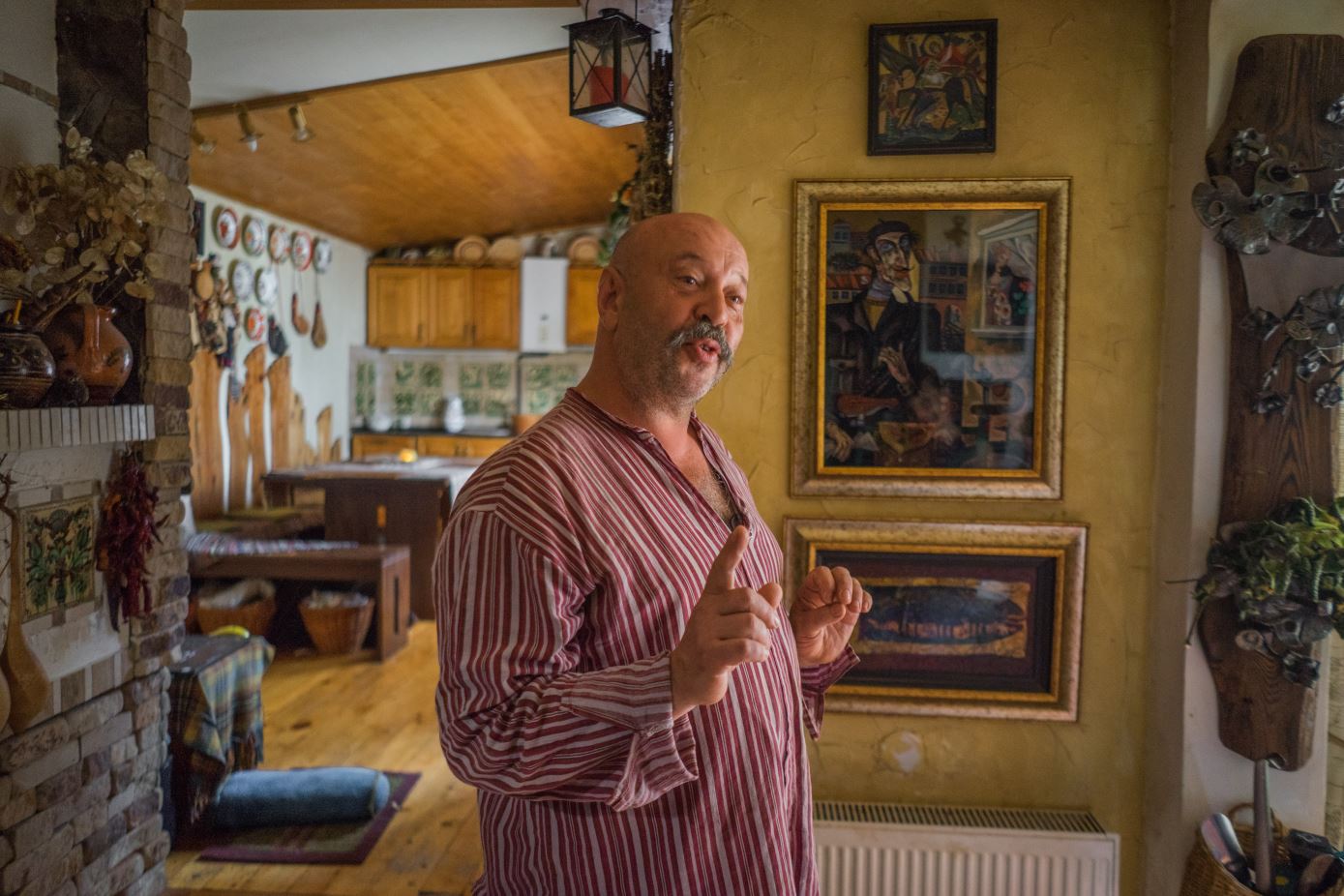
– How did you decide to draw on the glass?
– Somewhere in the third year I saw the works of the artist Ivan Ostafiichuk on the glass and could not take my eyes off. That's when something has to happen, it will necessarily occur. And in about a week or two I got a book about the Romanian icon on the glass. I studied this edition very carefully, understood a lot and began to create the same work. It became a good part-time job, replenished my budget, was at that time not superfluous. After me on the glass, by the way, began to draw and others, but I was the first, and this in art is extremely important.
And over time, and this was not enough for me. Because when you do something good and you get it, then you want to add something from yourself. You can always use different techniques, textures and the like. After all, every artist has his own script in life. In addition, there are many points that give clues. If you take them into account and understand, then everything goes on easily. All my works like stories are fragments of my life. If it was with you, you just need to use it. I do it, but on the glass. Art should be done easily, then it is easy to perceive.
And then it turned out so, that I had a lot of the written works. I thought: what should I do with them? As often happens in life, everything is decided by chance. Once I met a Frenchwoman, invited her home and gave two pictures as a souvenir. Imagine my surprise when, two weeks later, she sent me an invitation to France to the wonderful city of Grenoble. And I took my work there...
He lived in France for five years, periodically coming home. I liked very much there – in peace, cleanliness and without rudeness. But, on the other hand, here better to create. Perhaps the land helps to create …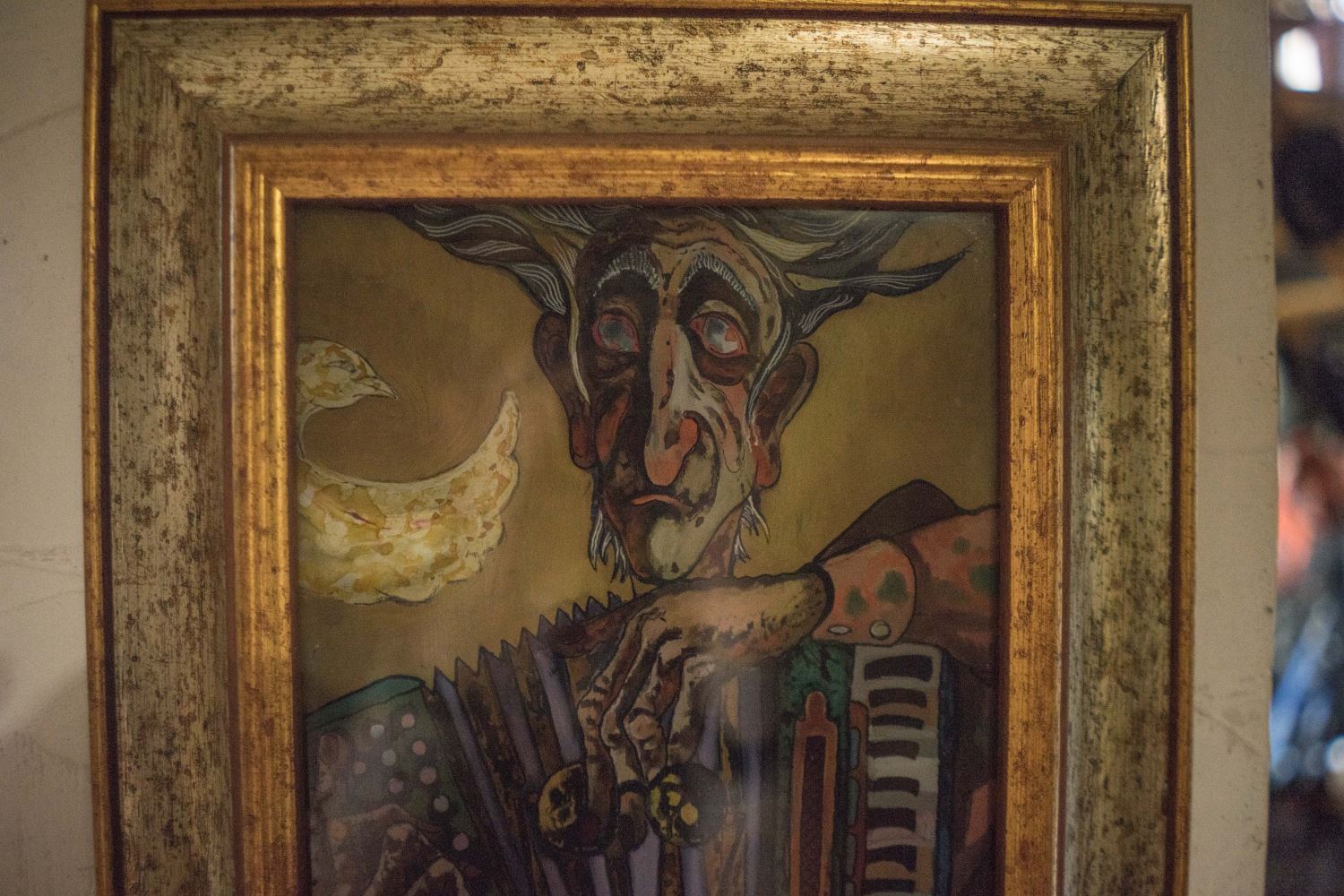
– Did you bring a lot of work from France?
– I have one work called "Blind Musician" (Artist demonstrate it. – Author). In France in the metro I saw a blind man who played the accordion so enthusiastically that he had eyes like a sighted person. "The time passed and I decided to write it on the glass - it turned out to be, in my opinion, very real.
Still, I remember, I wanted to visit the Moulin Rouge, really, really wanted to! I thought I would go to drink water at least. And I did go in, I drank some water – and seemed to be in a fairy tale! So deep in that atmosphere, I created my Moulin Rouge. Then there was my Notre Dame: Imagine the sun setting in the Seine, playing stained-glass windows, organ music being heard … I was just getting crazy! And, besides, I myself know how to "twist a good movie"… Man is rich in what he sees, we must only be able to perceive, feel, "eat"!
– Then, as far as I know, in your life and work was Spain?
– Yes, I went to Spain – a beautiful sunny country. There is such a heat, it's impossible to breathe, but you have to draw. I invented myself, how to convey the atmosphere – I decided to draw on the gold tones of light water colour, and then started to turn out well. In addition, there are a lot of holidays in Spain, great food, and I said that I want, first to "drink" and "eat" this country, and then I will draw. When I did it, I felt Spain both outside and inside. I was so thrilled! (Laughing. – Author).
– Do you often experiment?
– The artist must experiment, change, if he remains at the same level, it will become uninteresting and useless. In 16 years, I liked the one painting, in 18 – other, in 30 – third one. In general, with age, a person begins to feel and understand more, becomes wiser. So in creativity: experiencing something new, you can "screw up" the first things. But over time, ahead by two or three steps you see your actions.
– Tell us about the paintings on glass: obviously, it is more difficult to write, because the work cannot be corrected …
– No, you can correct it. But the technology is complicated by the fact that you draw on the other side, and performs drawing virtually blind. It is necessary to feel the work. But if you work a lot, then everything is easy for you.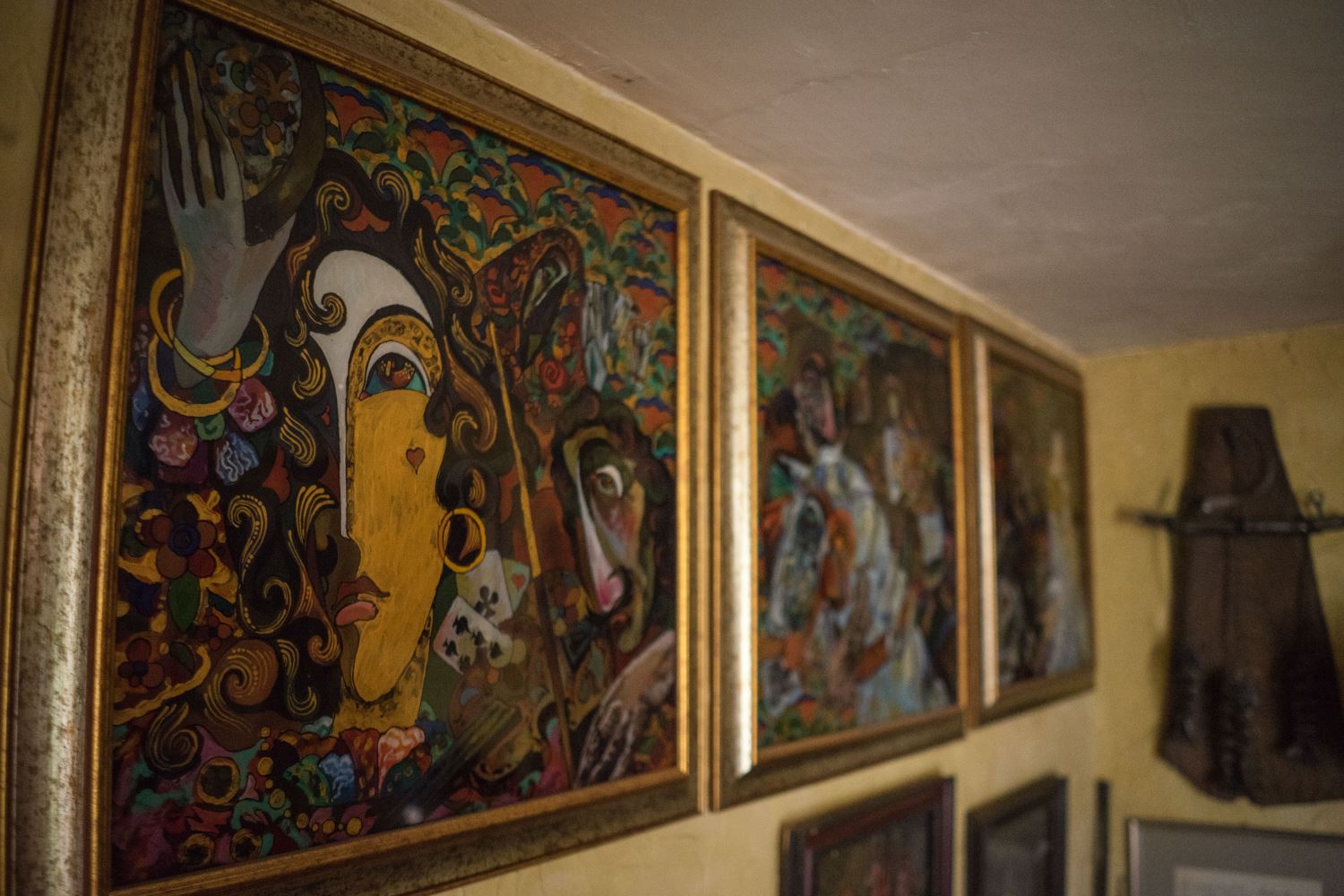
– Is it easy to make a transition – from glass to canvas?
– No, for me it's not hard. But the artist must always draw, like a violinist – to play. Endless. Because if you take a break, for example, for two weeks, then you must try again to return to the gamut. I, for example, see that I do not like, and it's good. The main thing is that I'm not in love with my art, because narcissism has ruined many artists: when an artist says that he is a genius and is already at the top, then this top of the mountain becomes for him a descent. It is very difficult to rise up after that.
– How is it going this process of creation?
– When you start drawing on glass, you completely immerse yourself in this. You start – and after a few hours something in your head seems to give the command "stop." Then stop and go to rest on the sofa. After two hours you look at your work already with different eyes, you understand what you did, you see your mistakes, which at that time can still be easily corrected.
– Do not you want constantly to add something, fix it?
– That's what should not be done, because sometimes little things can destroy important. There are also clean, concise works that you do in one breath, to which you do not need to add anything. In general, all my works have their own history. But I do not tell them, but I take and draw, passing everything on the glass. And so there remains a mystery – mine and that glass …
– And is it possible to create a secret in the picture, which is carried out for the order?
– I have work for the order. People come and say what they want, and if it appeases me, it coincides with my character, I draw with pleasure. I also undertake to make interiors, landscape design - I like to play with this. I have an original vision, but at the same time I try what nature has created, not to spoil it. Because we, people, often exchanged for pseudo-beauty, and this should not be done. It's like in the tea to add 5 tablespoons of sugar – it's sweet that it makes you sick...
– Tell us a little about the studio, about the house.
– I built it myself, gradually. The house is not ordinary; it contains only authentic things.
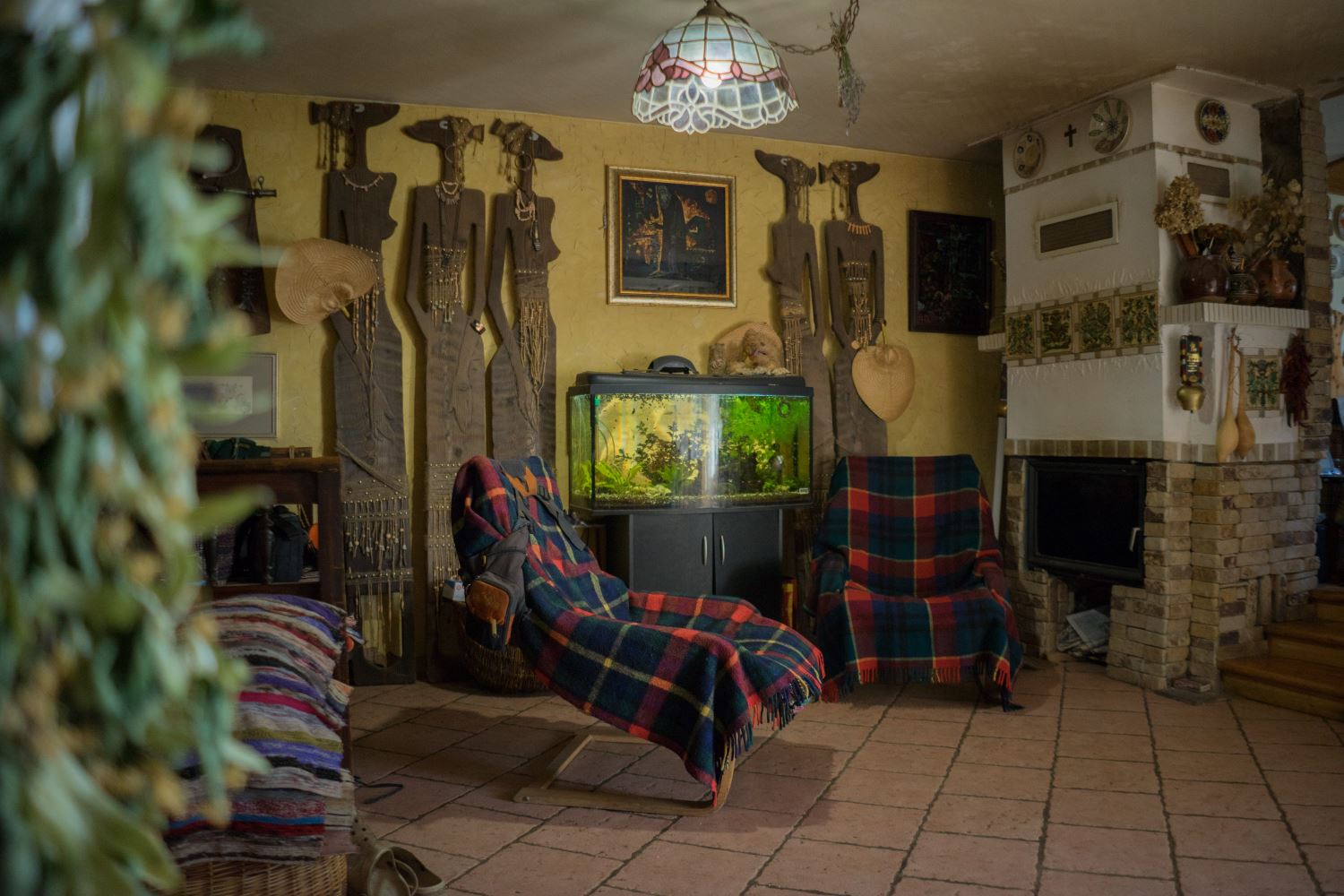
– Which of them are the most expensive, dear to the heart?
– Here, for example, the batik that Natasha Kikot did when we visited Kuzhbei village in Mezhhiria region. Here is the pot of Lesia Kots, which she made when she was still studying. Here is the work of Beata Korn. And here it is – my picture, I do a lot of my time irises painted. This, you know, the flowers of the pharaohs. Iris is very good twice a day, when the sun rises and sets. Then the rays pass through the petals of the flowers, and this is an unsurpassed beauty. The main thing is to be able to see and feel it. I'm trying to teach this to the children in the College, I want to cultivate a taste in them. In general, life is a game. You just need to be able to play and enjoy it!
